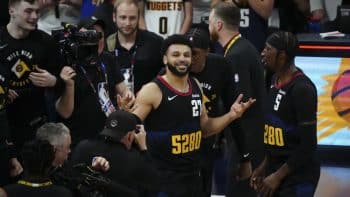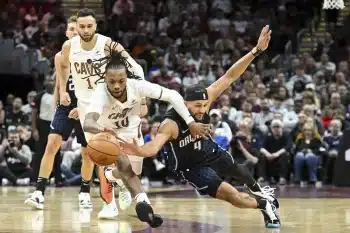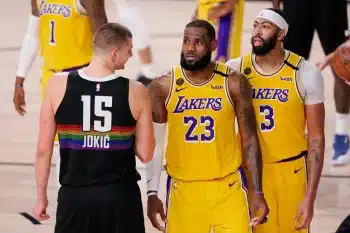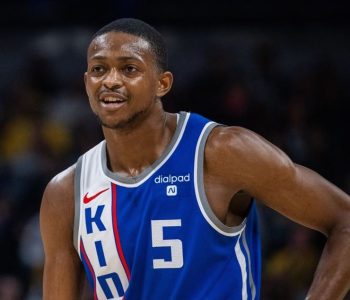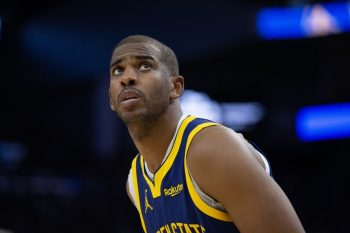Insiders Video
Christian Wood’s Upside Makes Him Intriguing Project
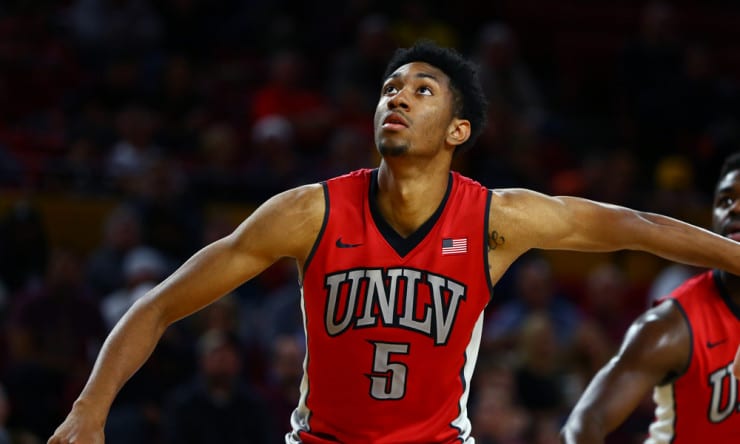
Each year, the NBA Draft presents the same dilemma for teams: whether to select a player who is ready to contribute right away or someone who has higher future potential. It is this choice that will determine how early Christian Wood, who played two years at UNLV, will be drafted.
Wood is a 6’11 power forward weighing in at 220 pounds with a 7’3 wingspan. He has a good but not great shooting stroke, but has shown potential to become a floor-spacing, rim-protecting power forward in the NBA. Add in the fact that Wood has great mobility as well as the ability to grab a defensive rebound and go coast-to-coast for a basket in transition, and it becomes clear why general managers are interested in the young forward.
But at this stage, even Wood himself understands that he is a project-type of player and that he will need to address some current weaknesses in his game to compete in the NBA.
“Yes, I know I’m based off potential,” Wood told reporters at the NBA Draft Combine when asked if he thought there was a lot of room to grow as a player. “But I think I can produce at the next level and that’s why I made the decision to come up.
“I feel like I have to get stronger. Especially at the next level, there are guys that [will be tougher]. If DeAndre Jordan was guarding me, how am I going to back DeAndre Jordan down in the post? You know? He’s a big guy. So that’s one thing I need to work on.”
At 19 years old, Wood has plenty of time – as well as the physical tools – to add size and muscle to his frame. NBA scouts and executives know this, which is why many of them care more about the kind of player Wood could be in a few years, rather who he is in his rookie season.
Players like Utah’s Rudy Gobert, who entered the 2013 draft with all the physical tools to become a great defensive center, are the best examples of guys making the most of their potential. Gobert was selected 27th overall in that draft and was considered a project, but he would have probably been selected first overall if teams knew he would develop physically so quickly.
Whereas Gobert had the potential to become a great defensive center, Wood has the potential to become a solid, multi-skilled, two-way power forward at the next level.
“I’m very versatile,” Wood said. “If you put a big guy on me, I have the ball-handling skills to take him off the dribble and beat him and get a layup. If you put a smaller guy on me, I have the ability to post-up and finish over him.
“My ball-handling and me running the floor. I feel like with the 24-second shot clock, guards get quicker shots instead of a 35-second shot clock. You can’t just hold the ball and set up a motion offense, so I think me running the floor is very good and I think that contributes to the NBA.”
Versatile is a word that commonly comes up when talking about Wood as a prospect. Earlier this month, Jonathan Givony of DraftExpress wrote: “Offensively, Wood is uniquely versatile, showing sparks of potential in many different areas that give him a nice framework of skills to build on long-term, both on the perimeter or inside the paint.”
In his sophomore season at UNLV, Wood averaged 15.5 points, 9.8 rebounds, 1.2 assists and 2.6 blocks per game. He shot 55.6 percent on two-pointers, 27.9 percent from three-point range and 73.4 percent from the free throw line.
There have been questions about his mental approach to the game and his consistency in terms of effort. When asked about misconceptions people have about his game, he quickly addressed the concerns about his effort on the court.
“I would say my effort,” Wood said. “People tend to question my effort, so I think that’s kind of a misconception. … There are times in the game, you know I played 32 minutes a game, there’s times in the game where sometimes I’ll hang out at the three-point line because a certain play was called. And there’s times, if you give me a smaller guy, I’m going to make it look easier to score on him. But, if you give me a big guy that’s my height, I kind of look different.”
So how can Wood overcome this misconception of his game?
“I have to give 100 percent,” Wood said. “If you give me a smaller guy to score over, I have to make it look good to score over him. If you give me a taller guy to score over, I have to make it look good to score over him as well.”
This issue will be one that teams will want to address with Wood as he moves through the pre-draft process. The physical tools are all there, even if he is a few years away from putting them all together. However, teams will want to make sure he’ll put in the work and effort to reach his full potential.
One thing that Wood wants scouts and executives to know is that he is a team-first guy and he’s bringing that mentality to the next level.
“I’m a good guy,” Wood said. “I’m personable, I’m a team guy, I put the team first. I don’t have any individual goals. I always have team goals and that’s just one thing about me that teams like and I think I’d be a good fit for any NBA team.”
At this point in the draft process, Wood is expected to go just outside of the lottery, somewhere in the mid-to-late 20s.
In Basektball Insiders’ latest consensus mock draft, Wood is projected to go between No. 19 and No. 23. DraftExpress currently has Wood going No. 26 in its mock draft. However, being a young sophomore with a high ceiling makes Wood a top candidate to jump his pre-draft projections, perhaps even sneaking his way into the lottery.
Teams have to balance between NBA-ready players and upside players when it comes to the draft. There is arguably no better representation of this balancing act in this year’s draft than Christian Wood.
